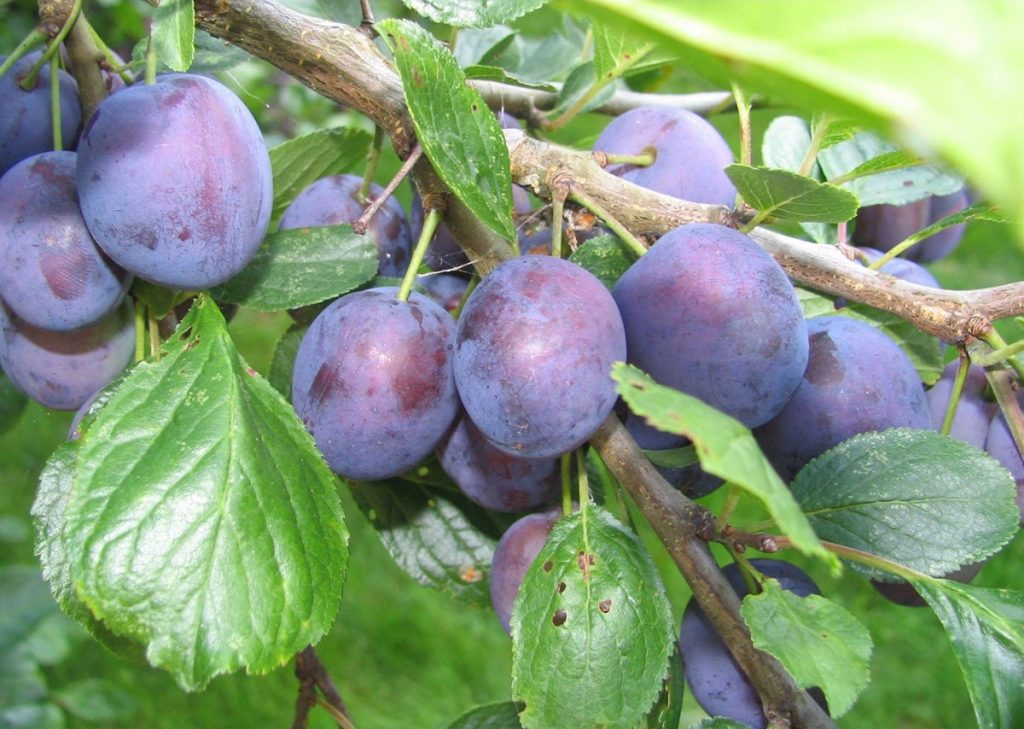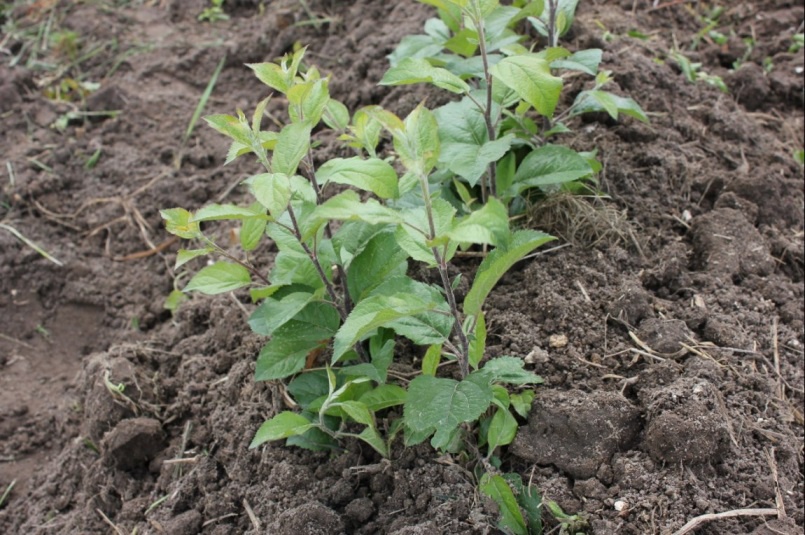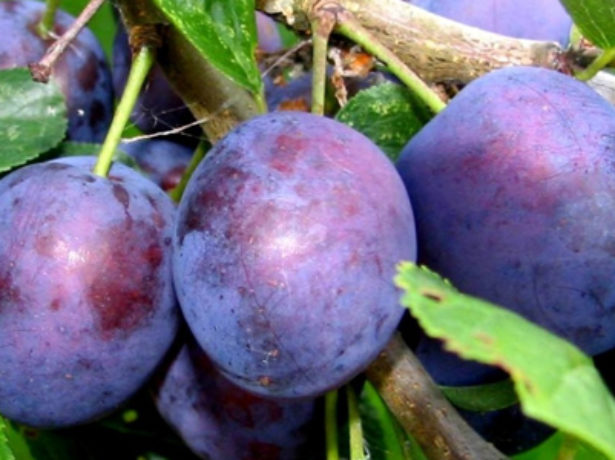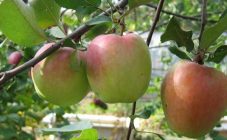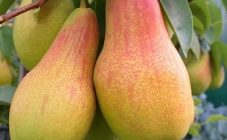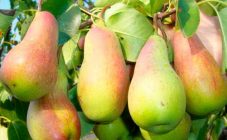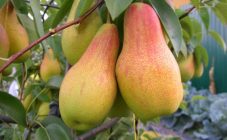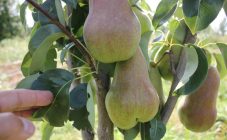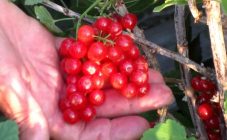Content:
Growing a plum tree and getting a good harvest is a more time consuming task than breeding other types of fruit plants. To do this, you need to choose the right hybrid that will take root in the summer cottage.
Culture information
The first plum saplings appeared in Russia in the mid-15th century under Tsar Alexei Mikhailovich Romanov, when a batch of overseas fruit trees was purchased abroad. They were planted in the suburbs, and then distributed throughout Russia.
Plum Volzhskaya beauty was bred by the breeder E.P. Finaev at the experimental station in Kuibyshev in the late 30s of the 20th century. It was obtained by crossing the Skorospelka red and Renclode Bave varieties. They did not have time to test the variety before the war, so it was relatively late included in the State List of Fruit Crops in the Volga and Central Regions (1965). Later, the hybrid was crossed with the Eurasia 21 variety. Plum Beauty TsGL, obtained as a result, exceeded all the breeders' expectations. The work was carried out at VNIIR and SPG named after I. Michurin, having received a yield of 1.2-1.4 times more than that of the previously used varieties.
Hybrid technical data
The description of the Volga beauty plum is as follows:
- An early ripening variety. The crop is harvested in mid-August. The crown of the tree resembles a sphere flattened from the sides. It consists of large leaves, painted in light shades of green and elliptical.
- The height of the tree ranges from 6-7 m. The bark on the branches and trunk is smooth and gray in color. Fruits appear on the tree at 4 or 5 years of development.
- Fruiting occurs with the help of bouquets developing on the shoots. Each inflorescence consists of 2 or 3 large white flowers.
- Volzhskaya plum has medium-sized petioles. Erect, thick shoots develop on it. The lentils are white, but there are very few of them on the tree.
- The variety is resistant to various diseases and attack by garden pests. Volzhskaya plum belongs to frost-resistant hybrids. It is propagated by grafting and cuttings.
- The hybrid belongs to the group of self-fertile plants, but in order to obtain stable ovaries, breeders recommend that gardeners plant pollinators near the Volga plum, for example, varieties Zhiguli, Skorospelka red, Mirnaya, Ternosliv Kuibyshevskaya, plum Tambovskaya beauty. They are needed for cross fertilization.
Characteristics of the fruits of this variety:
- the shape of the plums is round, slightly elongated;
- the small stalk is easily separated from the branches;
- the skin has a reddish-purple color with a lot of gray dots;
- the flesh is dark yellow in color, sweet and juicy;
- the bone is freely separated from the inside of the fetus;
- the size of the fruits exceeds the average;
- the weight of each of them ranges from 30 to 35 g.
The yield of the Volzhskaya plum variety is up to 30 kg per tree. It is noted that the plant retains fruiting regularity for many years. Pollination of a hybrid can be done by bees if there is an apiary near the site. Insects are attracted by a sugar solution sprayed on the branches and flowers of the plum.
Use fresh fruits or preserve them for the winter.
Plum growing
It is recommended to plant young trees in the fall (seedlings are added dropwise) and early spring. The Volzhskaya plum variety prefers clay and loamy soils with an acidity of 6–7 pH.
For a hybrid, you need to select areas that are well lit by the rays of the sun. It is best to plant the shoots on the slopes of small hills. Although the variety loves moisture, it is bad for the close location of groundwater (they must pass at a depth of at least 200 cm).
Seedlings are selected for planting, at least 2 years old, in which the length of the roots is more than 10 cm.The bark should be smooth and clean, without wrinkles and spots. It is not recommended to choose trees with dry branches.
Next, prepare the landing pit. For autumn planting, it should be 0.5 m deep and about 70-80 cm in diameter, and a layer of soil mixed with 0.25 kg of phosphorus and potassium fertilizers or 3 buckets of manure is laid inside. If the gardener works in the spring, then 100 g of industrial mixtures or 2 buckets of compost are poured into the recess.
A wooden stake is driven into the bottom of the pit. A seedling is placed in the hole so that its root collar is 5 cm above the ground surface. The soil is poured into the hole, tamped. A circular groove with a roller is made around the tree. Pour 30 liters of water into it. Mulch the soil with sawdust. Passages of 200-300 cm are left between the rows of trees, and an area of 4.5 X 4.5 m is allocated for the plums themselves.
Further care
Caring for the Volga plum consists of timely feeding, pruning and watering. The variety loves moisture, so watering the tree is paramount.
You need to water the seedlings in the following order:
- the first time the procedure is carried out after flowering;
- then the plum is watered after 2-3 weeks;
- the next irrigation of the plant is carried out after another 10-14 days;
- the fourth time the trees are watered during the development of the fruit;
- then irrigate the hybrids after harvest;
- in September or October, the seedlings are watered for the last time.
One tree takes 8 buckets of water, and during the last procedure, 160 liters of liquid will be needed for each copy. Cold water should not be used for irrigation measures.
The first pruning is done 12 months after planting. The height of the seedling is fixed at 100 cm from the ground. The crown is formed in 3 tiers. The first floor consists of 3 branches 0.7 m above the ground. The second layer has 2 branches, fixed 60 cm above the previous layer. The third floor consists of one shoot, which is 0.5 m higher than the second floor.
Subsequently, every year, you need to remove all processes that thicken the crown. With sanitary and anti-aging pruning, all broken and diseased shoots are removed. They also remove the tops that have died from frost.
Top dressing of the Volzhskaya plum variety is carried out in several stages. In the spring, trees are given it 3 times: before the flowers appear, when they bloom and after the buds fall. For the first time, up to 30 g of ammonium nitrate is applied to 1 m² of soil, then a urea solution (20 g of substance per 1 bucket of water) is used - 5 liters of liquid per seedling. After flowering, 1 kg of dry chicken manure is diluted in 10 liters of liquid. Pour 2 liters of solution under each drain. The procedure is repeated every 2 weeks.
In the summer in mid-June, the hybrids are fed with potassium and phosphate fertilizers. Each tree takes up to 20 liters of an aqueous solution with mixtures.
In autumn, at the end of September, superphosphate and potassium sulfide are introduced into the soil. The land is treated with wood ash and chalk.
The Volzhskaya plum variety is protected from diseases by prophylactic spraying with drugs such as becimide, Bordeaux liquid, acrophyte, actelik.
The seedlings are protected from garden parasites with 3% solutions of carbamide and urea.Rodents are destroyed with wood ash and kerosene saws. They are scattered around the trees.
Advantages and disadvantages of the variety
The advantages of the Volzhskaya plum hybrid are:
- easy tolerance of winter frosts;
- attractive appearance and taste of fruits;
- resistance of the variety to various garden pests and good immunity from fruit rot;
- the first tasting in August;
- stable yield over the years.
The hybrid has several disadvantages:
- freezing and death of buds in severe winter and night spring frosts;
- the large size of the tree, which creates inconvenience when harvesting;
- spoilage and cracks in fruits with a large amount of moisture;
- poor transport tolerance (long distances);
- increased fragility of branches with a sharp drop in temperature.
The Volzhskaya plum variety gives a high yield, so it is popular with most gardeners. A novice gardener, before planting a hybrid in his area, should familiarize himself with the method of proper care for the plum, only in this case he will get the desired result.
